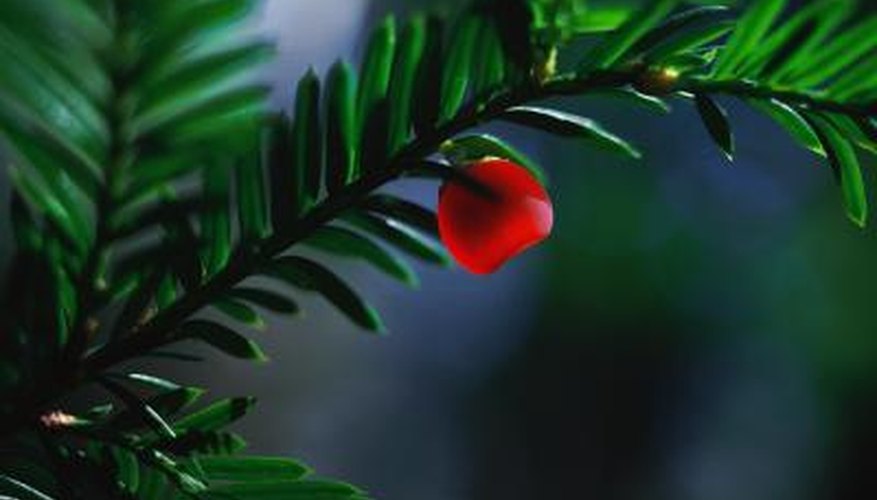Yews are hardy, needled evergreens native to England and Asia, but extremely popular in the U.S. Their dense green foliage creates an ideal hedge, ground cover or specimen plant. Yews are among the oldest known plants, largely due to their ability to regenerate. New trees often sprout at the root to grow up around the parent tree. Yews are famously disease resistant, but not invincible.
Root Rot
Yews are susceptible to root rot, also called Pythium or Phytophthora. Root rot attacks the plant when the soil is excessively wet or fungi have been introduced via contaminated soil or water. Symptoms first appear as leaves near the base of the plant wilt and die. Eventually, the roots turn black and rot or break. The best way to prevent root rot is to plant yews in well-drained soil and avoid over watering. Root rot fungus cannot be treated with chemicals. Gardeners can manage the problem by replacing diseased plants and their soil with healthy specimens and sterilised soil mix.
- Yews are susceptible to root rot, also called Pythium or Phytophthora.
- The best way to prevent root rot is to plant yews in well-drained soil and avoid over watering.
Winter Drying
Yews are not particularly cold hardy. Desiccation, or drying, of the foliage is a common problem during the winter -- especially for yews grown in windy, exposed areas. Preventing winter drying begins with planting yews in the proper locations. Avoid placing yews on the south or southwest sides of buildings or in highly exposed spaces subject to excessive sunlight and wind. If a yew is already growing in a poor location, covering it with pine boughs or Christmas-tree greens during the harshest winter months can provide some protection.
- Yews are not particularly cold hardy.
- Desiccation, or drying, of the foliage is a common problem during the winter -- especially for yews grown in windy, exposed areas.
Twig and Needle Blights
Yews may be affected by twig and needle blights that are caused by fungi that attack and kill plant tissue. The sudden spotting or wilting of foliage is the first symptom of blight. Different blights attack different yew species, so it's best to consult your local Cooperative Extension office for help in controlling these blights.
Pests
Mealybugs and scale are pests that prey on the yew. Both insects suck the sap out of plant tissue, which can lead to yellow foliage and leaf drop. The white mealybugs look like small bits of cotton and leave a waxy powder on the plant. Scale appear as bumps on the lower sides of yew leaves. Mealybugs and scale emit a sweet substance called honeydew -- which ants love -- that can produce a black surface fungal growth called sooty mould. Once pests infest yews, they are difficult to control. The best course of action is to keep healthy plants away from diseased plants and consult your local Cooperative Extension office for advice on eliminating the pests in your particular area.
- Mealybugs and scale are pests that prey on the yew.
- The white mealybugs look like small bits of cotton and leave a waxy powder on the plant.
